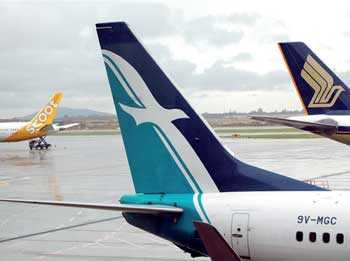Friday Jan 09, 2026
Friday Jan 09, 2026
Monday, 19 August 2019 00:00 - - {{hitsCtrl.values.hits}}

IATA’s performance figures for 2018 show that global air connectivity continues to become more accessible and more efficient.
The IATA World Air Transport Statistics (2019 WATS) confirm that:
“Airlines are connecting more people and places than ever before. The freedom to fly is more accessible than ever. And our world is a more prosperous place as a result. As with any human activity this comes with an environmental cost that airlines are committed to reducing. We understand that sustainability is essential to our license to spread aviation’s benefits. From 2020 we will cap net carbon emissions growth. And, by 2050, we will cut our net carbon footprint to half 2005 levels. This ambitious climate action goal needs government support. It is critical for sustainable aviation fuels, new technology and more efficient routes to deliver the greener future we are aiming for,” said IATA Director General and CEO Alexandre de Juniac.
Highlights of the 2018 airline industry performance are as follows.
Passenger
System-wide, airlines carried 4.4 billion passengers on scheduled services, an increase of 6.9% over 2017, representing an additional 284 million trips by air.
The development of the low-cost carrier (LCC) segment continues to outpace that of network carriers.
Measured in available seat kilometres (ASK), LCC capacity grew by 13.4%, almost doubling the overall industry growth rate of 6.9%. LCCs accounted for 21% of global capacity) in 2018, up from 11% in 2004. 
When looking at available seats, the global share of LCCs in 2018 was 29%, reflecting the short-haul nature of their business model. This is up from 16% in 2004.
Some 52 of IATA’s 290 current member airlines classify themselves as LCCs, and other new model airlines.
Airlines in the Asia-Pacific region once again carried the largest number of passengers system wide. The regional rankings (based on total passengers carried on scheduled services by airlines registered in that region) are:
1. Asia-Pacific 37.1% market share (1.6 billion passengers, an increase of 9.2% compared to the region’s passengers in 2017)
2. Europe 26.2% market share (1.1 billion passengers, up 6.6% over 2017)
3. North America 22.6% market share (989.4 million passengers, up 4.8% over 2017)
4. Latin America 6.9% market share (302.2 million passengers, up 5.7% over 2017)
5. Middle East 5.1 % market share (224.2 million passengers, an increase of 4% over 2017)
6. Africa 2.1% market share (92 million passengers, up 5.5% over 2017)
The top five airlines ranked by total scheduled passenger kilometres flown were:
1. American Airlines (330.6 billion)
2. Delta Air Lines (330 billion)
3. United Airlines (329.6 billion)
4. Emirates (302.3 billion)
5. Southwest Airlines (214.6 billion)
The top five international/regional passenger airport pairs were all within the Asia-Pacific region again this year:
1. Hong Kong – Taipei Taoyuan (5.4 million, down 0.4% from 2017)
2. Bangkok Suvarnabhumi – Hong Kong (3.4 million, increased 8.8% from 2017)
3. Jakarta Soekarno-Hatta – Singapore Changi (3.2 million, decreased 3.3% from 2017)
4. Seoul-Incheon – Osaka-Kansai (2.9 million, an increase of 16.5% from 2017)
5. Kuala Lumpur-International – Singapore Changi (2.8 million, up 2.1% from 2017)
The top five domestic passenger airport-pairs were also all in the Asia-Pacific region:
1. Jeju – Seoul Gimpo (14.5 million, up 7.6% over 2017)
2. Fukuoka – Tokyo Haneda (7.6 million, an increase of 0.9% from 2017)
3. Melbourne-Tullamarine – Sydney (7.6 million, down 2.1% from 2017)
4. Sapporo – Tokyo-Haneda (7.3 million, decreased by 1.5% from 2017)
5. Beijing Capital – Shanghai Hongqiao (6.4 million, up 0.4% from 2017)
The top five nationalities traveling (international routes) are:
Cargo
Following a very strong year in 2017, air freight volumes grew more modestly in 2018 in line with global trade volumes.
Globally, freight and mail tonne kilometres (FTKs) showed a 3.4% expansion as compared to 9.7% in 2017. With capacity increasing by 5.2% in 2018, the freight load factor fell by 0.8 percentage point to 49.3%.
The top five airlines ranked by scheduled freight tonne kilometres flown were:
Airline Alliances
Star Alliance maintained its position as the largest airline alliance in 2018 with 21.9% of total scheduled traffic (in RPKs), followed by SkyTeam (18.8%) and oneworld (15.4%).